The need for a new house was triggered by an increase in the size of the contractor’s family. It began with a desire to “live in a single house” and a lifestyle of “spending time surrounded by our favorite things”. I wanted a house that was simple, but at the same time, where the scenery and colors that users could see changed depending on the people living there. In addition, I focused on “low cost” and I searched for a house on the premise that I would not receive instructions on the floor area (construction area).
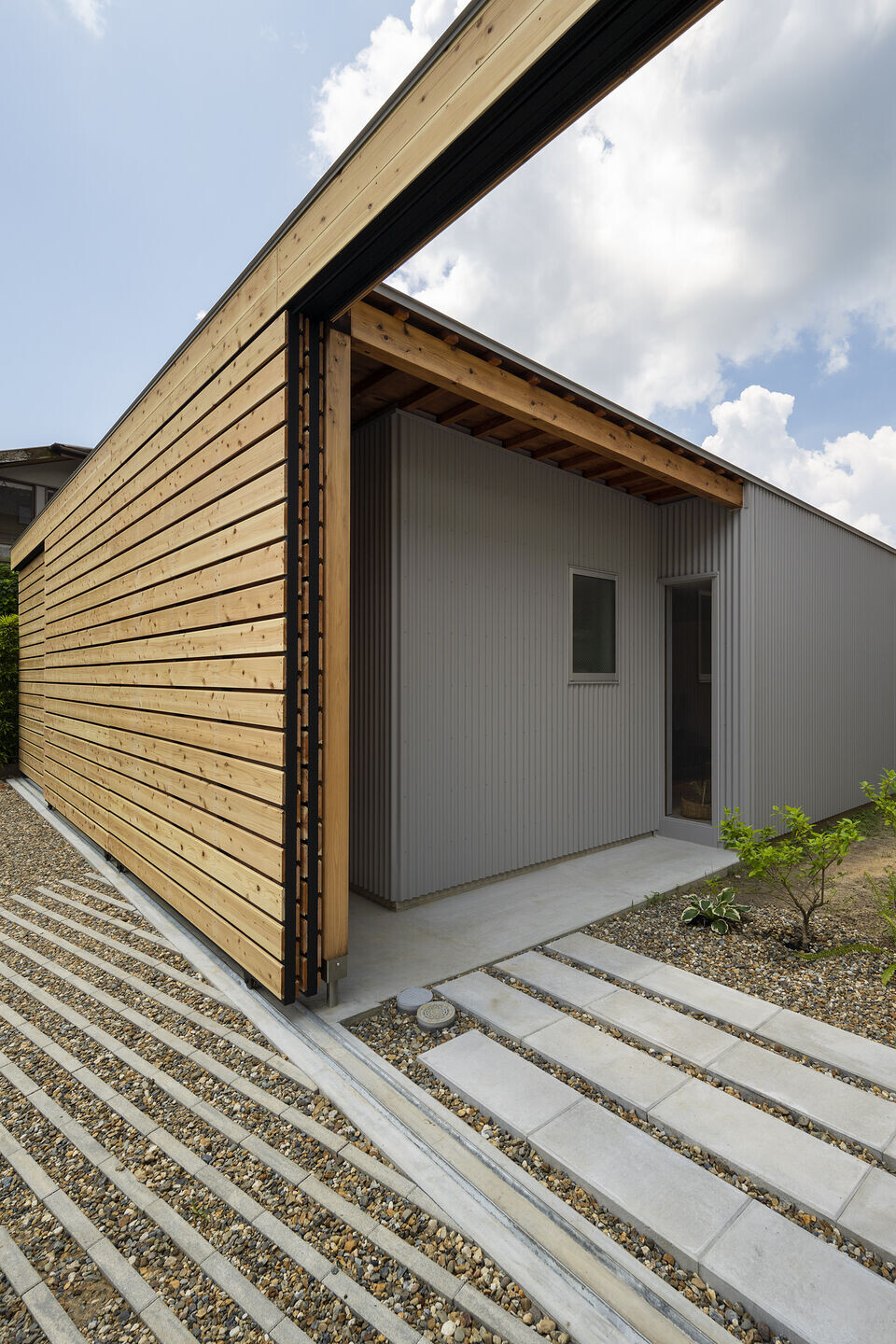
The hope for the site was that it would not be too far from the current residence, located in a residential area, and was just right regarding distance to the station and the budget.

Regarding this, it was decided that a building a house in “Heguri” would meet all the above requirements. After repeated meetings with the contractor, in order to fulfil all the requests, we landed on a design that could balance two concepts (“flat building” and “Quality before quantity”).

“Flat building”
The most distinctive element is the wall that extends to both ends of the site. The purpose was to create a space with a sense of privacy within a limited cost. However, what should we do to alleviate the feeling of obstruction while sometimes blending in with the surroundings? I also considered the viewpoint. As a result, we designed a canal that can satisfy both “a space with a sense of privacy” and “a space without a sense of obstruction”.
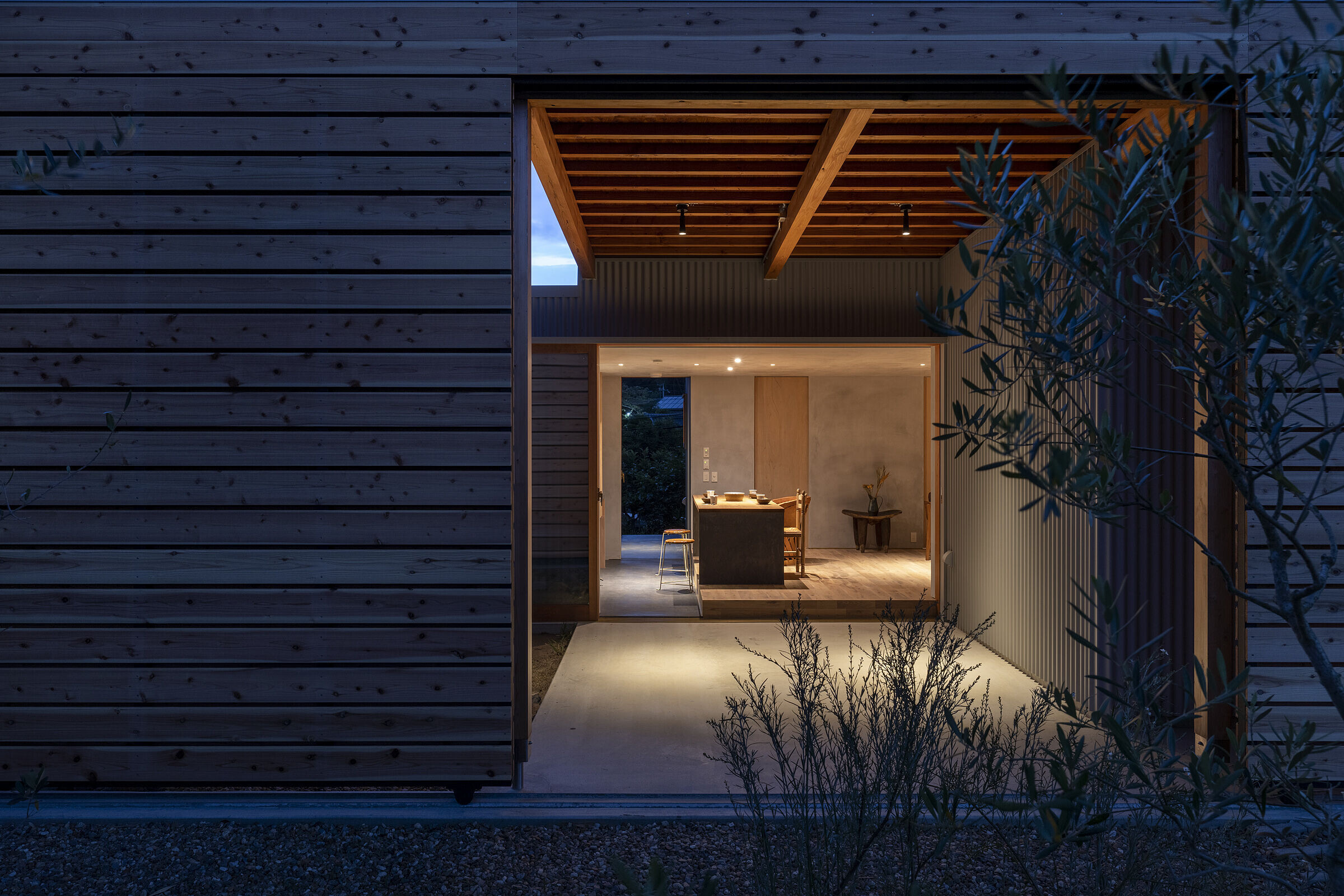
However, there is a sense of oppression in a space with only a fence visible in a residential area. Therefore, the layout of the fence and the building was shifted from the parallel line of the road. By not making the building parallel to the windows of the adjacent land, the lint of sight inside and outside will not be face-to-face, and the deviation is not easily noticed. The result was four gardens, and one of the charms is that one has a choice of different comfortable places.
In addition, each room connected to the living room, serving as a flow line, has a clear entrance. The front of the toilet which, at a glance, looks like part of the corridor is designed to double as a washbasin.
Considering the flow of housework, the entrance soil and street are integrated to establish a connection with the kitchen. Two children’s rooms are expected in the future. Finishing is achieved with plaster and solid flooring.

“Quality before quantity”
Low cost tends to be relatively cheap. However, while being compact, the customers emphasized “quality”. In today’s world, minimalism is being reviewed in the context of “information overload” and “material overload”. In order to keep up with such trends, we tried to make minimalism and quality coexist. In other words, the purpose is to improve “quality” while limiting “quantity”.
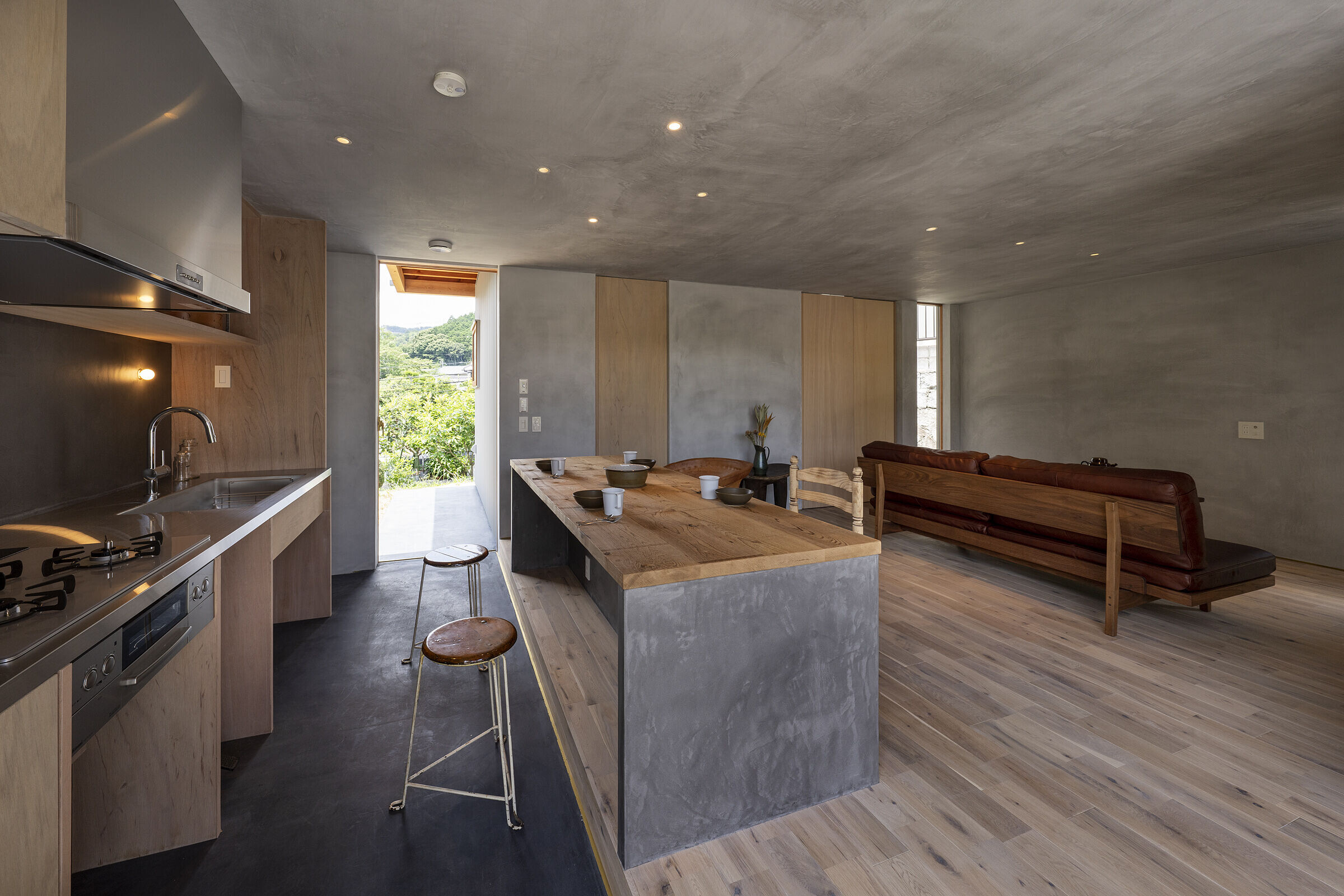
One of the examples devised for that purpose is the “entrance porch and outdoor living room”. Although this is the entrance porch, it is a space where one can do little outdoor activities. As the size of the family increases, the activities will change in various ways. It is my hope that the family will create colorful memories even in the space called the “entrance porch”.
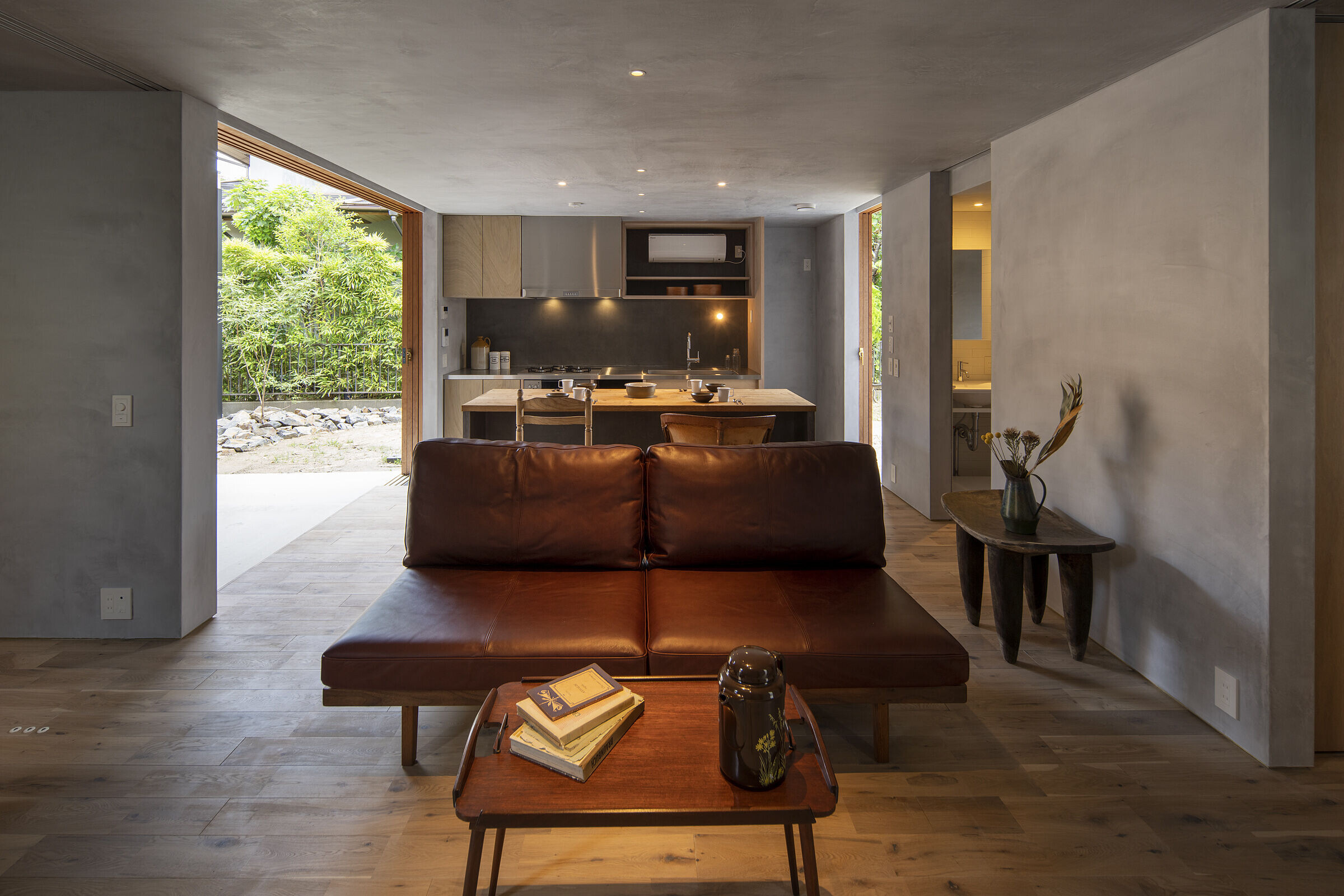
The same applies to the space called the “closet and dry space”. As the number of family members increases, the amount of laundry inevitably increases. It is not only a closet, but a space where one can dry their room, even on rainy days.
These are the spaces that can enhance quality of life.
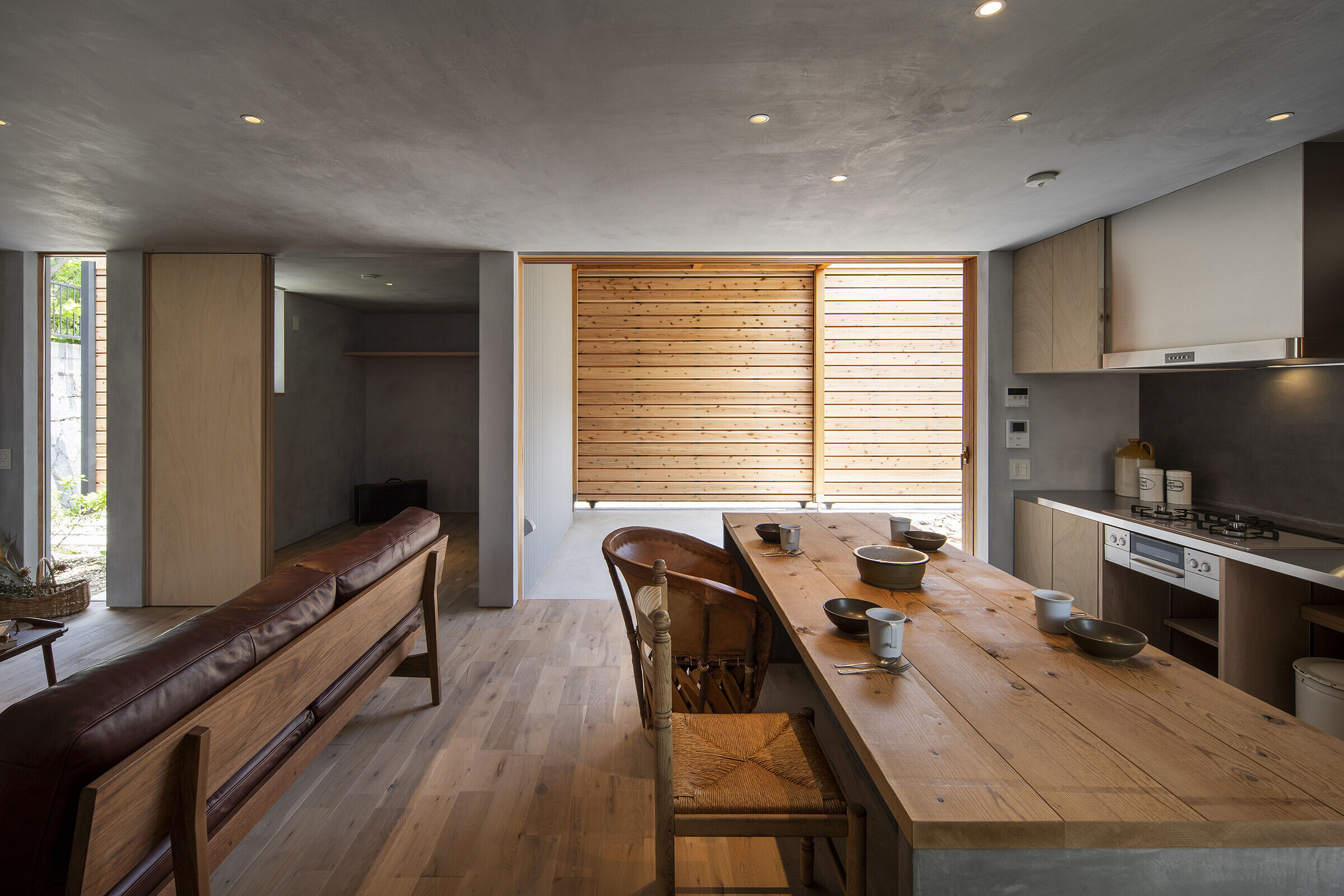
The point of ventilation equipment is a filter that takes filtered air into the room.
The idea at the time of design was, above all, “I want the family to stay healthy forever”. We adopted type 2 ventilation through a filter that removes impurities from the outside air, so that clean air circulation can be created in every corner of the house. In addition, a sprayed heat insulating material for wooden construction was used, and the sash was also made of double glazing to improve the heat insulating properties.

The planting plan is to place three olives against a simple yet impressive façade. In order to emphasize the same tree species, the surrounding area was covered by gravel, and gravel was surrounded by chestnut stones in a circular shape as a connection between the inside and the outside of the wall. A chaste tree, which has a leaf color similar to that of an olive tree, was planted on the inside the give the space continuity when opened.

If these trees grow to a large size, I think it will make the compactness and luxury of this house even more impressive.
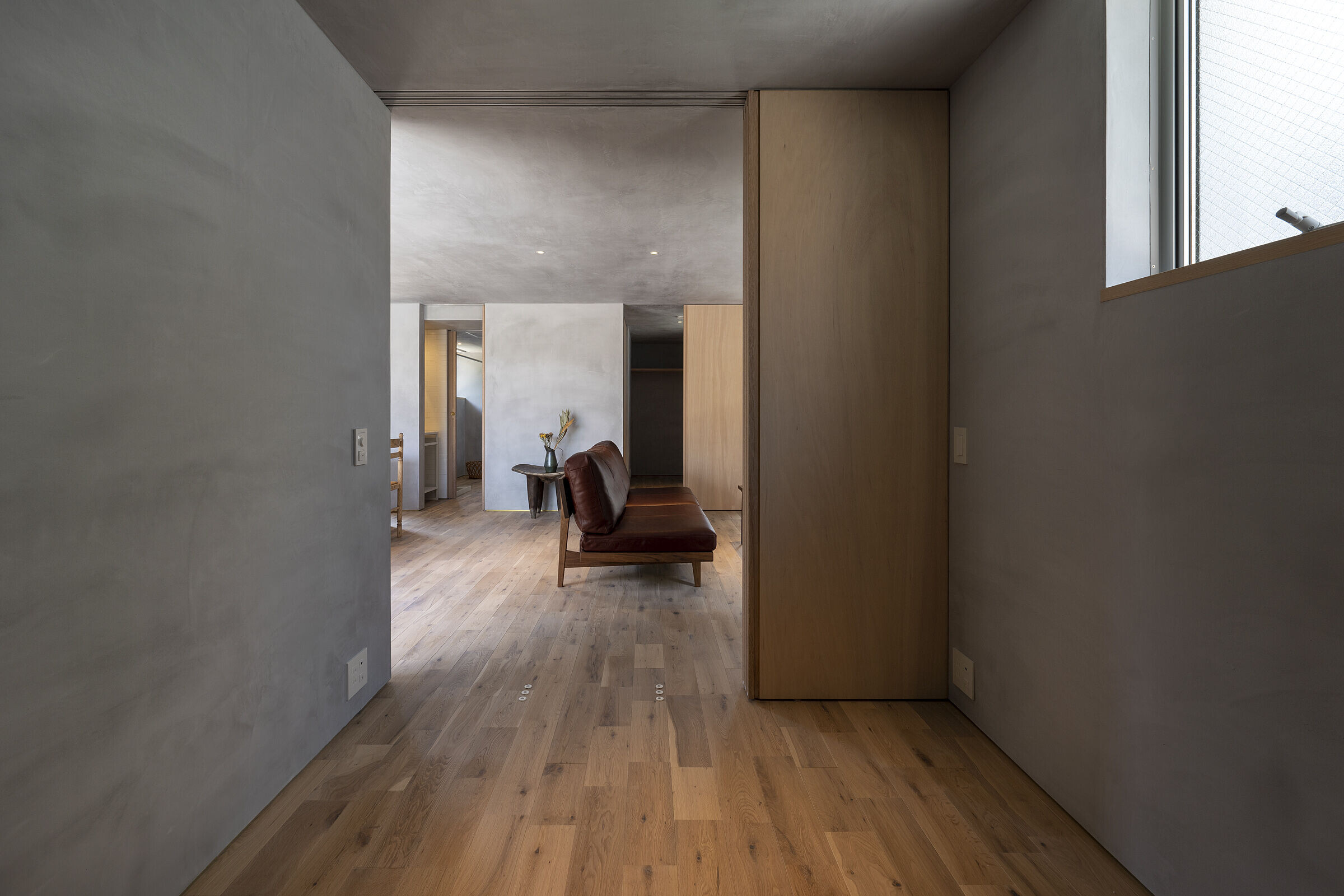
The lighting plan emphasised the ease of viewing. It is a lighting plan that reconsiders the “excess of light”, seeks “quantity” of brightness and pursues the “quality of light” that lives comfortably at night and affirms shadows and darkness. The ceiling’s downlight uses a “glareless downlight” that gives the illusion that the lighting is “on” but “off”. The presence of equipment was suppressed, and unpleasant glare was eliminated. The size is also Φ50, which is a small lighting fixture.
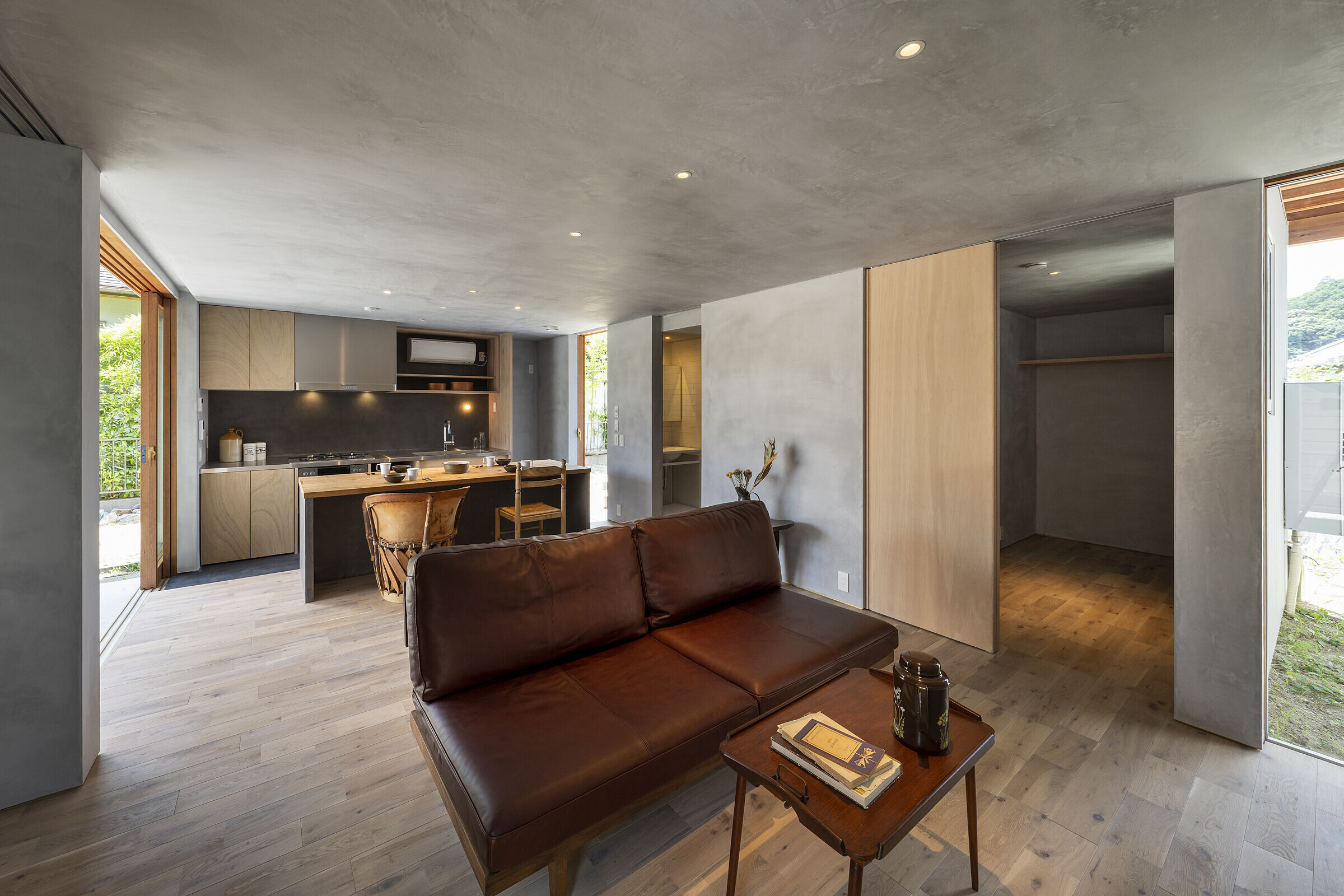
The beauty of the space and the sophisticated minimalism coexist on the ceiling surface where the presence of lighting fixtures is suppressed.

The era of mass production and mass consumption is over. From now on, it will be an era where quality and ease of use are required while being compact and surrounded by only what one likes. While emulating the challenges of our predecessors, we hope that this will add new breath and become a model for the future of housing.









































